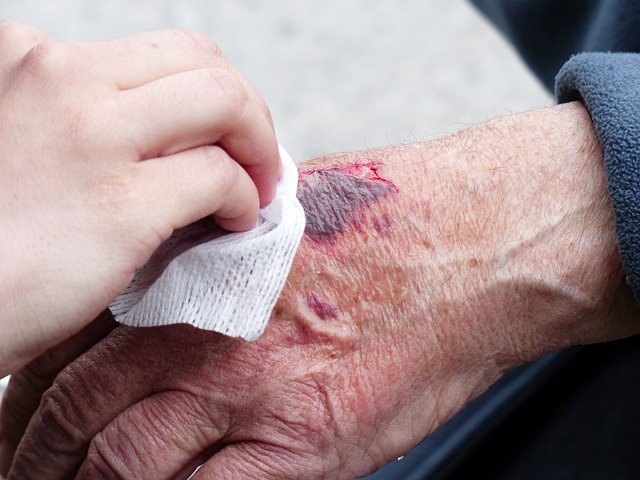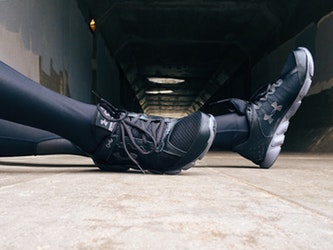
(Source: Pixabay)
If you have sustained a wound due to injury, it’s crucial to avoid infection. Water and too much moisture will create an ideal environment for harmful microorganisms to grow, such as bacteria, that may slow down wound healing. That’s why you can recover from injury faster by keeping your wound dry.
But how do you keep your wound dry after an injury? Continue reading to find out more.
Cover Your Wound With A Skin Wrap
Plastic and waterproof skin wraps, like SealSkin Medical Wrap, can cover, protect, and keep your wound dry after an injury. Covering the wound will keep it clean.
Here’s how to apply a skin wrap to a wounded, injured area:
- Clean the wounded area with water and mild soap. You can gently dab or wipe the area with a soft washcloth or gauze. Just don’t get soap on the wound, and avoid using iodine or hydrogen peroxide because these cleansing solutions can irritate the skin.
- Apply the plastic skin wrap by wrapping it around the wound. Medical stretch skin wraps don’t require extra anchoring, such as tape or adhesive, because they work as “wrap-and-go” for convenient wound care, keeping the wound dry and clean.
However, if the injury is minor, such as a scratch or minor scrape, you can keep your wound uncovered for faster wound healing.
Avoid Activities That Could Wet Your Wound
After an injury, you may have a severe open wound that should stay dry to prevent infection. Make sure your wound doesn’t get too wet to avoid the risk of your wound pulling apart. However, you can take quick showers for about five minutes to ensure that your wound will not be soaked in water. Just avoid subjecting your wound to strong water pressure from the shower by adjusting the shower knob before you enter the shower.
Here are more examples of activities you should avoid doing to keep your wound dry:
- Swimming In A Pool: Bacteria in the water, especially in public pools, could seep into your wound and cause infection. That’s why you should avoid swimming for at least three weeks after an injury. This measure will ensure that your wound has completely healed.
- Doing Water Sports Activities: You should avoid kayaking, canoeing, rafting, and banana boat riding a week after being wounded to avoid the risk of wetting the wound area. Wait patiently until your doctor says it’s okay to engage in these activities.
- Stepping Outside When It’s Raining: Raindrops or rainwater can easily get into an open wound. To be safe, avoid going outside when it’s raining or if you suspect incoming rain. If you really need to go out, it’s best to wrap your wound in waterproof skin wrap and an additional layer of clothing, aside from taking your umbrella with you.
- Working On Aquariums Or Hydroponic Gardens: There’s always a risk of your wound getting wet if you’ll be handling or cleaning aquariums or hydroponic gardens. So better avoid these tasks for a week to keep your wound dry and allow it to heal faster.
Apply Petroleum Jelly
According to the American Academy of Dermatology, if a skin is injured either from an accident or surgery, the body heals by itself and repairs the wound.
But there are extra steps you can take to take care of your wound. One way to keep the wound dry and free from water and bacteria is to apply petroleum jelly. Here are ways on how petroleum jelly can help take care of your wound:
- Petroleum jelly acts as a water barrier, keeping water out of the wound.
- Applying petroleum jelly helps keep your wound moist but not too moist that it causes further infection.
- Petroleum jelly prevents your wound from completely drying out, which usually forms a scab. If your wound scabs, it will take longer to heal.
- Petroleum jelly can help prevent scar formation.
However, you shouldn’t apply petroleum jelly to all types of wounds. The product can only be used for minor cuts and burns. Don’t apply petroleum jelly to deep and open wounds, since doing so may hinder wound healing. Instead, you can ask your doctor for other remedies or best practices for your particular type of wound.
Conclusion
It’s important to keep your wound clean after trauma or injury. Gently washing the area with water and mild soap will help remove debris and germs out of the wound. After you or a healthcare professional wash your wound, drying and covering the wound are important ways to prevent infection. Avoid exposing your wound to water or moisture to prevent infection and promote faster wound healing.
About The Author:
Sebastian Peale is a health care professional who specializes in providing health care services to individuals and families in his community. Sebastian also works as a business consultant and help startups establish policies for workplace health and safety.




